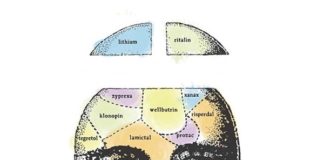Tag: Study 329
Study 329: The Data Wars Cross the Rubicon
It can be difficult to pinpoint transitions. The Rubicon that led from a Medical Republic to a Pharmaceutical Empire was crossed in 1962 with the passage of the Amendments to the Food and Drugs Act. This act put in place an apparatus of controlled trials, prescription-only status and disease indications that laid the basis for a global pharmaceutical hegemony, although the drift to Empire could still have been stopped at this point.
“The Human Cost of a Misleading Drug-Safety Study”
Writing for the Atlantic, David Dobbs examines how much harm has been done in the 14 years since Paxil was wrongly determined to be safe and effective. “Study 329, as it became known, helped spur a huge increase in Paxil prescriptions,” Dobbs writes. “In 2002 alone, over 2 million prescriptions were written for children and teens, and many more for adults.” “Thousands of children, teens, and young adults attempted or committed suicide while on Paxil,” and the reanalysis of Study 329 in BMJ makes it seem “more likely than ever” that many did because of the drug.
Study 329: MK, HK, SK and GSK
It is appropriate to hold a company or doctors who may be aiming to make money out of vulnerable people to a high standard when it comes to efficacy, but for those interested to advance the treatment of patients with any medical condition it is not appropriate to deny the likely existence of harms on the basis of a failure to reach a significance threshold that the very process of conducting an RCT will mean cannot be met, as investigators' attention is systematically diverted elsewhere.
Psychiatry’s Thalidomide Moment
The authors of Study 329 began recruiting adolescents for a comparative study of Paxil, imipramine and placebo in 1994 and finished their investigations in 1997. They dropped a large number of their original cohort, so the randomness element in the study must be open to question. Late in 1998, SmithKline Beecham, the marketers of Paxil, acknowledged in an internal document that the study had shown that Paxil didn’t work for adolescents in terms of the two primary and six secondary outcomes they had established at the start of the study. In a nutshell, Study 329 was negative for efficacy and positive for harm, contrary to their succinct upbeat conclusion.
The Troubled Life of Study 329: Consequences of Failure to Retract
If someone were to ask the surviving authors of Study 329 the question: “Knowing what you know now, if you had to do it over, would you agree to participate in that study again?”, many would probably say no. Study 329’s problems started to surface right after it was published. Several doctors wrote letters to the JAACAP Editor with probing questions, mostly centred on the psychiatric side effects of paroxetine, and the measures used to claim its efficacy in treating adolescents. The authors responded and the questioners did not pursue their concerns further. Except one.
Next week, fourteen years and two months after it was published, it is about to take yet another hit, when the Restored version is published.
Study 329: The Timelines
In addition to hosting the Panorama programs and The Famous Grouse history of Study 329, Study329.org has a comprehensive timeline on the origins of concerns about the SSRIs and the risk of suicide, initially with Prozac and subsequently with Paxil/Seroxat. The hope is to provide a comprehensive repository for anyone who wants to study SSRIs, RCTs, and Study 329 in particular.
Study329.org: The Panorama Files
Study 329 is probably the most famous clinical trial ever. It is one of the few to attract a Fraud action and is certainly the only one with a $3 Billion fine linked to it. The study began recruiting adolescents to Paxil, imipramine or placebo in 1994 and finished up in 1998. Later in 1998, SmithKline Beecham, the marketers of Paxil (they hadn’t discovered it), acknowledged in an internal document that the study had shown that Paxil didn’t work for Children. This lack of benefit was something they were not inclined to share with the outside world. Instead they decided then they would pick the good bits out of the study and publish these.
Bogus Journal Articles Distract From the Real Problem in Academic Medicine
The buzz in academic publishing right now is the story about how several hundred open access journals accepted a fake research paper. Of much more concern is that there are top-tier medical journals which have published clinical trials, that were read by thousands of people, that influenced clinical decisions, that we now know were bogus, but have never been retracted.









